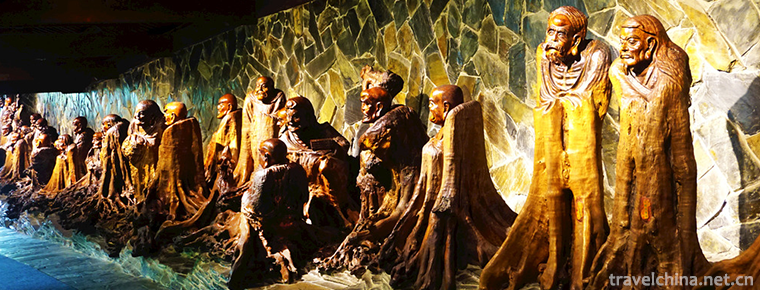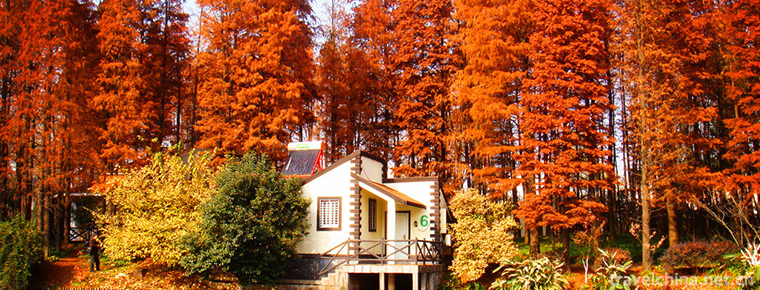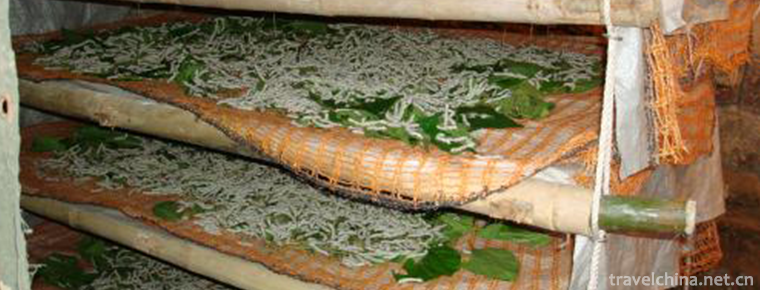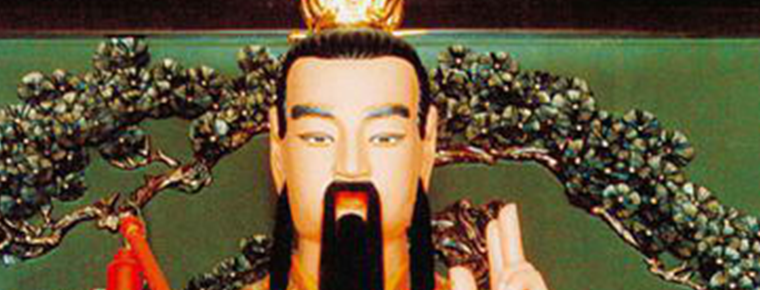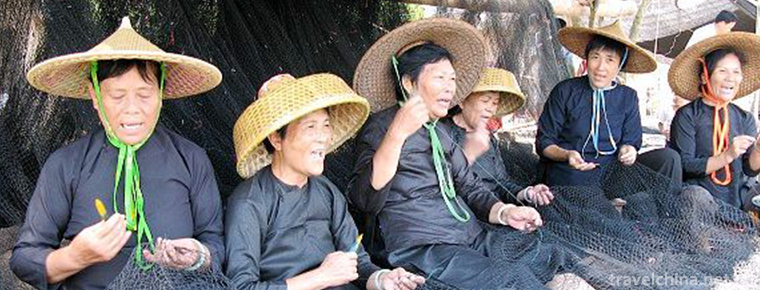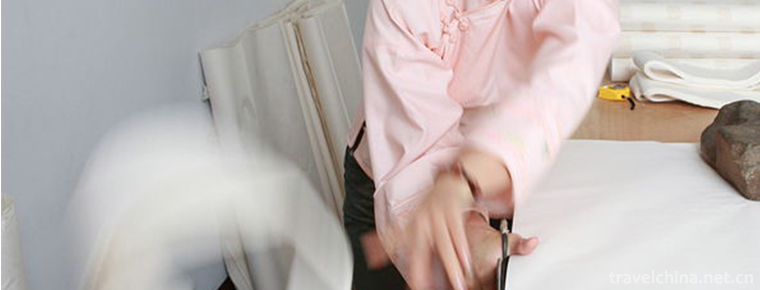Tibetan Paper making Techniques
Tibetan Paper making Techniques
Tibetan paper-making technology, Tibetan Autonomous Region's traditional handicraft, one of the national intangible cultural heritage.
Tibetan paper-making skills are usually made by peeling, scratching, cooking, retorting, rinsing, tamping, beating and copying.
On June 5, 2006, Tibetan paper-making skills were listed in the first batch of national intangible cultural heritage list, project number_-69.
historical origin
Since Princess Wencheng married Tubo in the Tang Dynasty, papermaking in Central Plains has been introduced into Tibet for more than 1300 years. In the 8th century, in order to meet the needs of translating scriptures, the Tibetan people continued to learn and draw lessons from the advanced paper-making skills of the surrounding nationalities. Using local materials, Tibetan paper with unique local characteristics was produced.
During the reign of Qianlong in the Qing Dynasty, when he was a governor of Hunan Province, he came to Tibet, leaving a long sentence of "Tibetan Paper Poetry", which said, "Shu Paper is inferior to Yu Zhang, and the workers are humble and jealous about footwear... The Yellow Religion of Yiyi has a special novelty, such as mortar pulp, curtain ripple golden essence wave... The quality is firm and cocoon-like, and the color is white and bright. The meaning of the inscription is firm and the painting is lively. Cut it to paste the window, and make it an account. He Yi Koryo, the foreign paper also yielded. Meiyan Tibetan paper is superior to Shu paper, even Koryo paper is slightly inferior.
After the reform and opening up, with the rapid development of economy and the substantial improvement of productivity, the government attaches more and more importance to the inheritance and development of national handicraft. Especially in the 1990s, the government increased its support to the traditional national handicraft industry, and the traditional Tibetan paper handicraft was inherited and developed in this period.
Process characteristics
Due to the limitations of raw materials and processes, the output of Tibetan paper in Tibet is extremely low, with an annual output of less than 10,000 sheets. It has the characteristics of high strength, natural moth-proof, anti-corrosion, color-invariant and so on.
Firstly, it has the functions of moth-proof and anti-corrosion, and is easy to preserve for a long time. In order to prevent moth, the ancient paper used three pepper liquids in Southern Song Dynasty, i. e. pepper, pepper and pepper soaking paper. Tibetan paper made from the root of Stellera chamaejasme L. does not need to add other toxic raw materials because it contains toxins, thus saving resources. Because Tibetan paper is poisonous, it can be stored for a long time without being moth-eaten, and rats can avoid being bitten by rats. Buddhist scriptures and documents written on wolf-poisoned paper can be preserved for a long time. The archives and documents written on this paper in Tibet are still well preserved. Tibetan scriptures which have experienced hundreds of years in monasteries are intact and intact, and their handwriting is not damaged for a long time. Not ambiguous, proving that Tibetan paper does have this special effect, this is a major feature of Tibetan paper.
Second, the paper is soft and the fibers are slender. Because of its soft texture, Tibetan paper absorbs ink strongly and its handwriting never fades.
Third, little damage to the eyes. Tibetan paper is of low whiteness, slightly yellowish, and does not dazzle or hurt the eyes. Long-term reading has less side effects on the eyes.
Fourth, it is non-fracturing, compressive and flexural, tough and strong, tensile, easy to carry, and can be hidden in the cabinet. Tibetan paper is light in weight, only about half of the same volume of rice paper.
Fifth, it can be recycled and renewable. Waste paper from Tibetan paper production can also be recycled into process products, such as Xiao Si and hot wire. According to local people, Xiao Si and Hot Silk are the main masks used in Tibetan God dancing. Because Tibetan paper has many characteristics, it is favored by Chinese and foreign consumers. They use Tibetan paper as window paper because Tibetan paper is tough, durable, anti-turbidity, anti-dust, and can also prevent pests in summer. Thus, Tibetan paper has a certain market demand in China and abroad.
Sixth, turn waste into treasure, protect the environment and do not pollute the environment. The raw material used for Tibetan paper production is Stellera chamaejasme, which is a highly toxic plant. It can not be used to feed cattle and sheep. It can not be used for the development of animal husbandry on the plateau. Instead, it can be used to produce Tibetan paper, turning waste into treasure, killing two birds with one stone. At the same time, the dyes used in Tibetan paper production are all mineral pigments, which do not pollute the environment and are conducive to the protection of the ecological environment.
Technological process
Draw materials
Tibetan paper is made from the bark of a shrub called Stellera chamaejasme, which grows over 6500 meters in the Himalayas. It is slightly toxic to insects. Daphne plants are perennial herbs. They are 20-50 centimeters tall, with bushy stems, alternate leaves and lanceolate to elliptic lanceolate. Initially, hemp was also used as a raw material for papermaking in Tibet (the technology was handed down from the mainland of the Central Plains). The raw materials used for paper making in Han Dynasty were hemp, rags and bark. After Jin Dynasty, the raw materials used for paper making were rattan bark, rice straw, wheat straw, mulberry bark and skins. During the Tang and Song Dynasties, there were nearly 10 kinds of papermaking raw materials. However, due to the insufficient supply of raw materials, Tibet took local materials according to its natural resources, mainly using Stellera chamaejasme to produce Tibetan paper. Stellera chamaejasme is widely distributed in the plateau. Its abundant raw materials provide the precondition for the development of Tibetan paper industry. Tibetan paper varieties with national characteristics are processed from cheap raw materials.
Technological process
The process of making Tibetan paper in ancient times was complicated, with eleven steps. The first is to strip the bark; the second is to dry; the third is to grind and flatten the rough bark with a knife; the fourth is to boil; the fifth is to hit the stone with a mallet until it is white; the sixth is to boil again; the seventh is to add starch to make it ripe; the eighth is to filter with gauze to make it flat; the ninth is to dry after leveling; the tenth is to beat the paper. Grinding, processing the thickness, softness and gloss of paper; the eleventh way is to use boiled paper with wheat flour to dry. In this way, the whole paper-making process is completed.
Inheritance and protection
Inheritance value
Tibetan paper industry has not only been fully promoted in Tibet, but also spread to India, Nepal, Bhutan and other countries. Superior Tibetan paper skills, a long history of Tibetan paper, rich experience in Tibetan paper production, Tibetan paper technology throughout Tibet, creating a unique Tibetan paper culture.
Superior Tibetan paper skills, long Tibetan paper history and rich Tibetan paper production experience have created a unique Tibetan paper culture. It is necessary to protect this important intangible cultural heritage.
Inheriting characters
Ciren Duojie, male, Tibetan, from Shira Village, Tarong Town, Nimu County, Tibet Autonomous Region. In June 2009, Cirenduojie was selected as the representative successor of the third batch of state-level intangible cultural heritage projects and declared by Tibet Autonomous Region.
protective measures
In 1993, Qiangba Zunzhu established Lhasa Caiquan Welfare Special School (Caiquan Welfare National Handicraft Research and Development Center), and resumed the production of Dege Handicraft Tibetan Paper in 1998.
In 2011, Lhasa Caiquan Welfare National Handicraft Research and Development Center was selected as the "intangible cultural heritage project base of Tibet Autonomous Region".
social influence
Important exhibition
On December 30, 2014, the New Year's Exhibition of "Our Text-Text Inheritance in the Intangible Cultural Heritage" co-sponsored by the Department of Intangible Cultural Heritage of the Ministry of Culture and the National Library of China opened in the National Museum of Classics and Records, in which Tibetan paper-making skills were displayed.

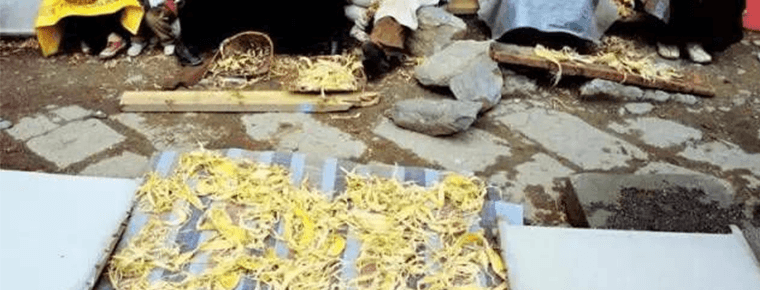
-
Root palace Buddhist Cultural Tourism Zone
Root palace Buddhist Cultural Tourism Zone / Gengong Buddha Country Cultural Tourist Area, National AAAAA Tourist Scenic Area, National Eco-civilization Education Base.
Views: 124 Time 2018-12-07 -
GongQing Forest Park
Gongqing Forest Park is located in Yangpu District, Shanghai. It is bordered by Huangpu River in the East and Military Road in the west. The total area of the park is 1965 mu, and the open public.
Views: 305 Time 2018-12-24 -
Ancient town of Tangqi
Tangqi Town, located in the northern part of Hangzhou City, borders Deqing County of Huzhou City, is about 20 kilometers away from the city centre and 13 kilometers away from Linping.
Views: 236 Time 2019-02-13 -
Silkworm custom
Haining City, the ancient name is meaningful, and later because of drunken plum from wood changed its name to salted plum. This is the seat of Changshui County in the Spring.
Views: 122 Time 2019-04-04 -
Heap harmonics
"Heap Harmony" first spread in the Yarlung Zangbo River Basin, the high terrain west of Shigaze to the whole area of Ali circle dance, and later gradually prevailed in Lhasa. It was the firs.
Views: 95 Time 2019-04-28 -
The legend of Huang Daxian in Huangchuping
Huang Chuping's legend is one of the local folklores in Jinhua, Zhejiang Province. It originated in the Eastern Jin Dynasty. The earliest written record was in The Biography.
Views: 70 Time 2019-05-04 -
Lingao Fishing Song
Lingao Fishing Song is a kind of Han folk song which is popular among fishermen in Lingao County, Hainan Province. Because of its use of the lining "Li Li Mei" and related legends, it is als.
Views: 268 Time 2019-05-13 -
Pudong Publicity Book
Nanhui Xuanjuan is an ancient traditional art of rap and singing. Xuanjuan originated from "vulgar speaking" in Tang Dynasty and "Tanjing" in Song Dynasty. It is a term used by Bud.
Views: 111 Time 2019-06-09 -
Copper Carving Skills
Hangzhou bronze sculpture is the continuation of ancient bronze manufacture. It developed greatly in Wuyue and Southern Song Dynasty. After Tongzhi in Qing Dynasty, Hangzhou bronze sculpture represent.
Views: 160 Time 2019-06-21 -
Xuan Paper Making Skills
The production of Xuan Paper, first through a leather production process and a grass production process, and then through more than 100 processes..
Views: 123 Time 2019-07-09 -
China University of Mining and Technology
China University of Mining and Technology (China University of Mining and Technology), referred to as China Mining University, is located in Jiangsu province. Xuzhou City Yes.
Views: 165 Time 2019-12-19 -
Suining medical and health
By the end of 2019, there are 3725 medical and health institutions in Suining, including 76 hospitals (63 private hospitals) and 3622 primary medical and health institutions; there are 21400 beds in medical and health institutions and 18200 health technicians.
Views: 381 Time 2020-12-16
